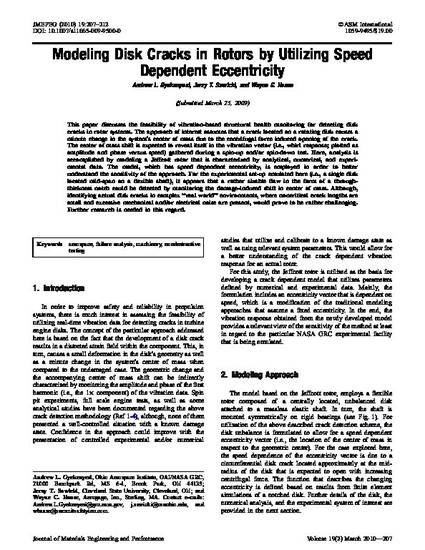
This paper discusses the feasibility of vibration-based structural health monitoring for detecting disk cracks in rotor systems. The approach of interest assumes that a crack located on a rotating disk causes a minute change in the system’s center of mass due to the centrifugal force induced opening of the crack. The center of mass shift is expected to reveal itself in the vibration vector (i.e., whirl response; plotted as amplitude and phase versus speed) gathered during a spin-up and/or spin-down test. Here, analysis is accomplished by modeling a Jeffcott rotor that is characterized by analytical, numerical, and experimental data. The model, which has speed dependent eccentricity, is employed in order to better understand the sensitivity of the approach. For the experimental set-up emulated here (i.e., a single disk located mid-span on a flexible shaft), it appears that a rather sizable flaw in the form of a through-thickness notch could be detected by monitoring the damage-induced shift in center of mass. Although, identifying actual disk cracks in complex “real world” environments, where noncritical crack lengths are small and excessive mechanical and/or electrical noise are present, would prove to be rather challenging. Further research is needed in this regard.

The authors would like to thank Dr. John Lekki and Dr. George Baaklini of the NASA Glenn Research Center at Lewis Field as well as the Integrated Vehicle Health Management Project within the Aviation Safety Program for providing the funds for this research effort.